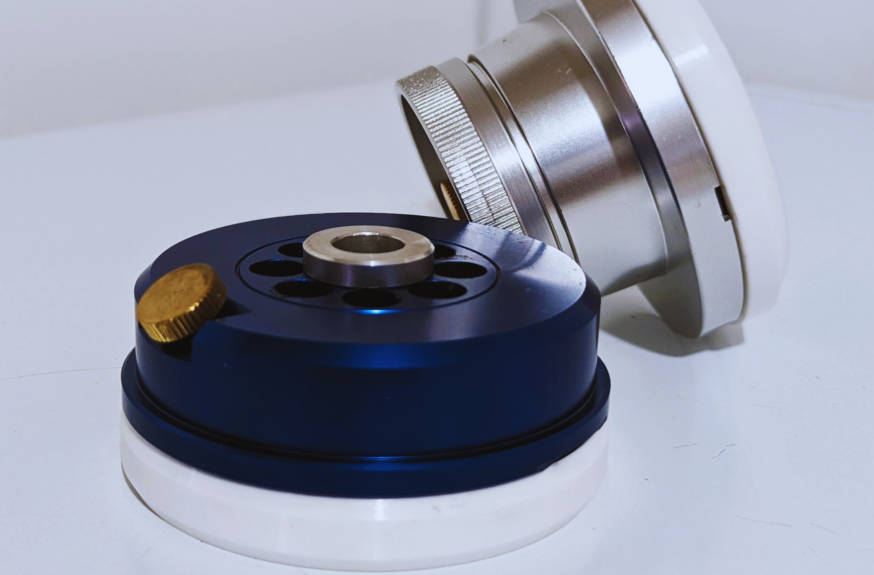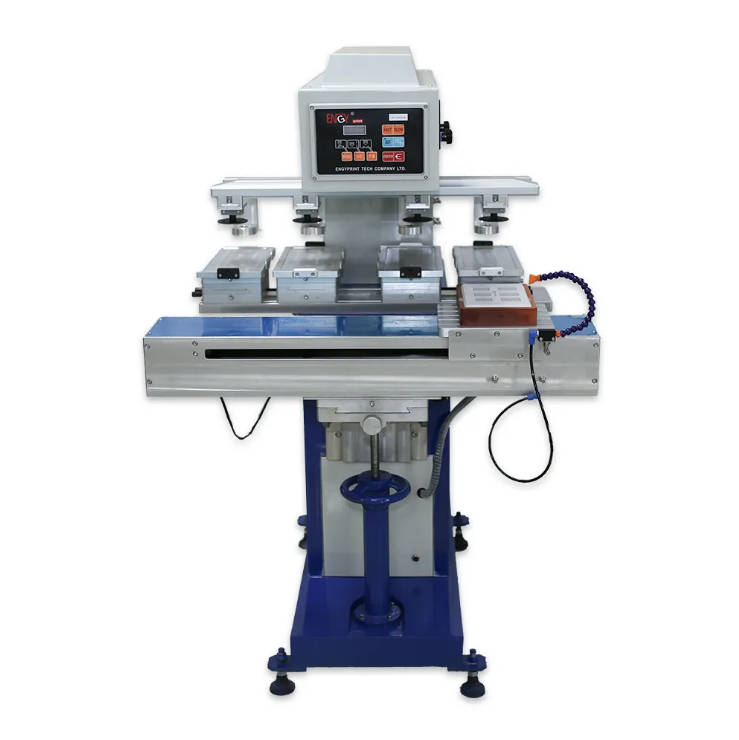I. Introduction: The Evolution of Pad Printing Ink Systems
In the intricate world of industrial manufacturing, pad printing stands as a critical process for decorating, branding, and marking a vast array of products, from medical devices to automotive parts. Its versatility allows for precise application on diverse shapes and surfaces. Central to this precision is the ink delivery system. For decades, the open inkwell system was the industry standard. However, the landscape of industrial printing has evolved, driven by demands for higher quality, greater efficiency, and improved safety. This evolution has led to the widespread adoption of sealed ink cup technology. For any business looking to optimize their pad printing operations, understanding why sealed ink cups are now the superior choice is crucial.

II. Understanding the Fundamental Differences
To fully appreciate the advantages of modern ink delivery, let’s first delineate the core differences between the two primary systems.
A. Open Inkwell System (Traditional Method)
The traditional open inkwell system involves an exposed reservoir of ink, usually a shallow tray or trough. A doctor blade, typically a steel blade, sweeps across the cliché (printing plate) to remove excess ink, leaving ink only in the etched image area.
This method, while historically significant, presents several inherent challenges:
- Ink Evaporation: The open nature of the system exposes the ink’s solvents to the air, leading to rapid evaporation. This causes frequent and unpredictable changes in ink viscosity.
- Viscosity Fluctuations: Constant evaporation necessitates regular solvent additions and manual stirring, making consistent ink viscosity a never-ending battle.
- Contamination: Dust, lint, and other airborne particles can easily fall into the open ink, leading to print imperfections and quality issues.
- Frequent Clean-ups: The exposed ink makes the process messy, requiring more frequent and thorough cleaning of the machine and surrounding areas.
B. Sealed Ink Cup System (Modern Solution)
The sealed ink cup system, in stark contrast, completely encloses the ink within a cup that also functions as the doctor blade. The cup, often fitted with a precision ceramic or tungsten carbide ring, sits directly on top of the cliché, forming a sealed chamber. As the cup moves across the cliché, the ring wipes away excess ink, leaving only the ink within the etched image.
This innovative design immediately addresses the shortcomings of its predecessor, hinting at benefits like consistent viscosity, significantly reduced ink waste, and improved operator safety.
III. Key Advantages of Sealed Ink Cups
The shift from open inkwells to sealed ink cups isn’t just a trend; it’s a fundamental improvement driven by tangible benefits that directly impact production quality and cost-effectiveness.
A. Superior Print Quality and Consistency
The primary driver for many businesses upgrading their systems is the unparalleled print quality and consistency offered by sealed ink cups.
- Viscosity Control: With the ink sealed, solvent evaporation is drastically minimized. This maintains a stable ink viscosity throughout the print run, eliminating the need for constant manual adjustments. This consistency is vital for achieving repeatable, high-quality prints, especially in sensitive industries like medical or electronics manufacturing.
- Reduced Contamination: The enclosed nature of the system acts as a barrier against external contaminants. Dust, fibers, and other airborne debris cannot enter the ink, preventing print defects like specks or smudges.
- Sharper Images: Consistent ink viscosity and cleanliness translate directly to sharper, more precise images and fine lines. This is particularly critical for printing intricate details, small text, or high-resolution graphics.
- Elimination of “Ghosting” and Inconsistent Density: The controlled ink flow within a sealed cup prevents issues like “ghosting” (faint, unwanted images) or inconsistent color density that can plague open inkwell systems due to uneven ink distribution or evaporation.
B. Enhanced Efficiency and Productivity
Beyond quality, sealed ink cups dramatically boost operational efficiency and productivity, leading to significant cost savings.
- Minimized Ink Waste: A major advantage of sealed ink cups is the substantial reduction in ink evaporation and spoilage. This directly translates to less ink consumption and lower material costs. Consider a typical industrial setting; the amount of ink saved over a year can be enormous.
- Less Downtime for Cleaning & Maintenance: The enclosed system means less mess, less ink splatter, and significantly fewer airborne ink particles. This drastically reduces the time and resources spent on cleaning the machine and the surrounding work area.
- Faster Changeovers: Changing ink colors with a sealed ink cup system is a breeze. Operators simply swap out one cup for another. This rapid changeover minimizes downtime between production runs, allowing for greater flexibility and higher output.
- Higher Throughput: The combination of stable viscosity, reduced contamination, and quick changeovers means machines can run longer, more consistently, and with fewer interruptions, leading to a higher overall throughput.
C. Improved Operator Safety and Environmental Compliance
In today’s regulatory environment, operator safety and environmental compliance are non-negotiable. Sealed ink cups offer substantial improvements in both areas.
- Reduced Solvent Exposure: By enclosing the ink, the release of volatile organic compounds (VOCs) from solvents into the air is significantly minimized. This creates a much healthier and safer working environment for operators, reducing their exposure to potentially harmful fumes.
- Cleaner Work Environment: Less exposed ink means less mess. This reduces the need for extensive ventilation systems and specialized cleaning procedures, contributing to an overall cleaner and more pleasant workspace.
- Compliance with Regulations: Adopting sealed ink cup technology helps businesses more easily meet increasingly stringent health, safety, and environmental regulations, reducing the risk of fines and improving corporate responsibility.
D. Longevity and Durability of Components
The protective environment created by sealed ink cups also extends the lifespan of critical printing components. The absence of constant dust and debris, combined with more stable ink conditions, reduces wear and tear on the printing plates (clichés) and the doctoring rings themselves. This translates to fewer replacements of expensive consumables and a further reduction in long-term operational costs.
IV. Addressing Common User Concerns & Misconceptions
While the benefits are clear, potential users often have legitimate questions.
A. Initial Investment Cost
It’s true that the initial investment for a pad printing machine equipped with sealed ink cups might be slightly higher than for an open inkwell system. However, this upfront cost is quickly offset by the substantial long-term savings in ink consumption, labor (cleaning and maintenance), reduced scrap rates, and extended component life. The return on investment (ROI) is typically swift and significant. Businesses often find that working with a reliable sealed ink cups supplier or a direct sealed ink cups manufacture can provide competitive pricing and long-term support.
B. Ink Compatibility
A common misconception is that sealed ink cups require specialized or limited ink types. In reality, most standard pad printing inks are fully compatible with sealed cup systems. Any reputable sealed ink cups factory or wholesale sealed ink cups distributor will confirm this and can provide guidance on specific ink formulations if needed.
C. Learning Curve & Maintenance Simplicity
While the transition from an open inkwell system involves a minor learning curve for operators, the overall operation and maintenance of a sealed ink cup system are often simpler and more intuitive once the initial training is complete. Less mess means less hands-on cleaning, and the predictability of ink behavior makes troubleshooting easier.
V. When to Upgrade to a Sealed Ink Cup System
If your current pad printing operation faces challenges such as:
- Inconsistent print quality leading to high scrap rates.
- Excessive ink consumption and waste.
- Frequent machine downtime for cleaning or ink adjustments.
- Concerns about operator exposure to solvents or environmental compliance.
- High-volume production demands requiring maximum uptime.
Then it’s an opportune time to consider an upgrade. Leading Sealed Ink Cups manufacture and Sealed Ink Cups supplier companies can assist in assessing your current system and demonstrating how a sealed ink cup solution can address your specific pain points. For businesses looking to scale or improve their overall efficiency, exploring wholesale Sealed Ink Cups options might be a cost-effective strategy.
VI. Conclusion: Future-Proofing Your Industrial Printing Operations
The advantages of sealed ink cups over traditional open inkwells are undeniable. They deliver superior print quality and consistency, significantly enhance operational efficiency and productivity, and create a safer, more environmentally compliant work environment. While there might be an initial investment, the long-term cost savings, improved product quality, and enhanced safety protocols offer a rapid and substantial return. Embracing sealed ink cup technology isn’t just an upgrade; it’s an investment in the future-proofing of your industrial printing operations, ensuring a competitive edge and sustainable success.





